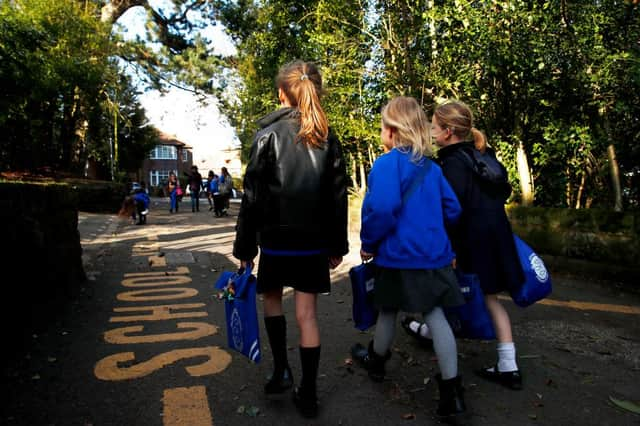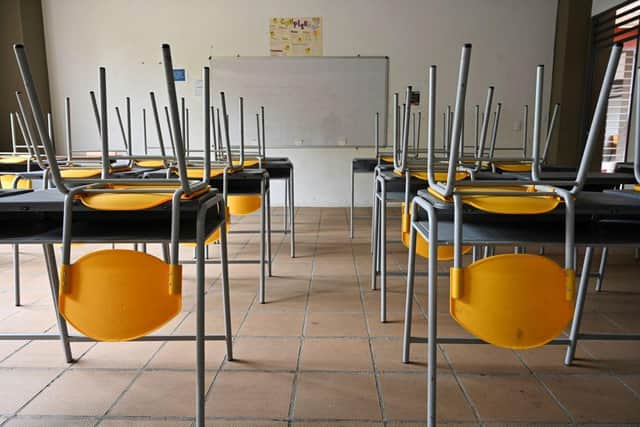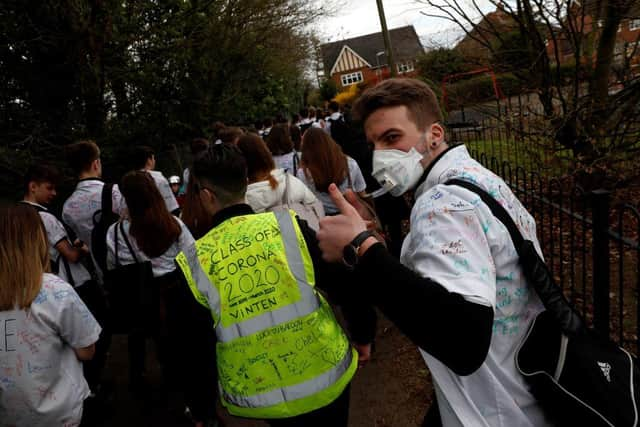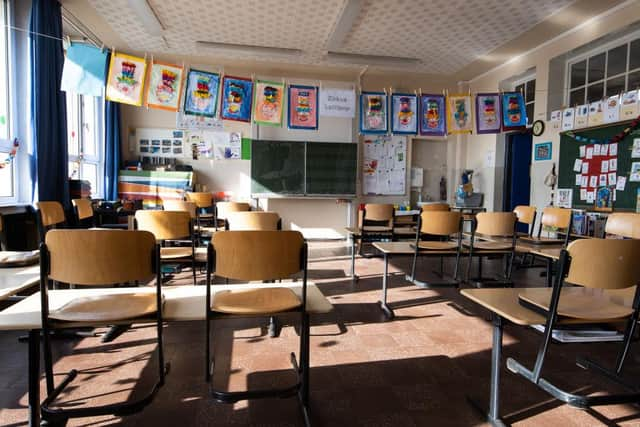Is it safe to send kids to school? Social distancing measures as up to 90% of schools remain closed in some areas


When it was first announced that the government planned to begin the gradual reopening of schools by the start of June, the public was assured that the move would be made only if it was safe to do so.
But in the weeks since, confusion over government guidelines, repeated calls from teachers to rethink the 1 June date and the refusal of some schools to reopen has raised more questions.
Advertisement
Hide AdAdvertisement
Hide AdA recent poll conducted by JPI Media showed that 83% of readers believed 1 June was too early to be sending children back to school.


So with schools (slowly) reopening, is it safe for kids to be going back to the classroom?
Here's everything you need to know.
What social distancing measures are in place?


The Government released guidelines for how schools might enforce social distancing between their pupils when classroom doors reopen.
The guidance is long, with suggestions of measures designed to stop the spread of Covid-19 ranging from regular hand-washing, to ensuring tissue bins are regularly emptied.
Here are some of the changes being advised:
Advertisement
Hide AdAdvertisement
Hide Ad- ensure that children and young people are in the same small groups at all times each day, and different groups are not mixed during the day, or on subsequent days


- ensure that the same teacher(s) and other staff are assigned to each group and, as far as possible, these stay the same during the day and on subsequent days, recognising for secondary and college settings there will be some subject specialist rotation of staff
- ensure that wherever possible children and young people use the same classroom or area of a setting throughout the day, with a thorough cleaning of the rooms at the end of the day. In schools and colleges, you may want to consider seating students at the same desk each day if they attend on consecutive days
Advertisement
Hide AdAdvertisement
Hide Ad- ensure that sufficient hand-washing facilities are available. Where a sink is not nearby, provide hand sanitiser in classrooms and other learning environments
- clean surfaces that children and young people are touching, such as toys, books, desks, chairs, doors, sinks, toilets, light switches, banisters, more regularly than normal
- ensure that all adults and children:
frequently wash their hands with soap and water for 20 seconds and dry thoroughly
clean their hands on arrival at the setting, before and after eating, and after sneezing or coughing
are encouraged not to touch their mouth, eyes and nose
Advertisement
Hide AdAdvertisement
Hide Aduse a tissue or elbow to cough or sneeze and use bins for tissue waste (‘catch it, bin it, kill it’)
- ensure that help is available for children and young people who have trouble cleaning their hands independently
- consider how to encourage young children to learn and practise these habits through games, songs and repetition
- ensure that bins for tissues are emptied throughout the day
Advertisement
Hide AdAdvertisement
Hide Ad- where possible, all spaces should be well ventilated using natural ventilation (opening windows) or ventilation units
- prop doors open, where safe to do so (bearing in mind fire safety and safeguarding), to limit use of door handles and aid ventilation
- get in touch with public sector buying organisation partners (for example ESPO, YPO, NEPO) about proportionate supplies of soap, anti-bacterial gel and cleaning products if needed
- there is no need for anything other than normal personal hygiene and washing of clothes following a day in an educational or childcare setting
Advertisement
Hide AdAdvertisement
Hide AdThe above is just a snippet of the Government's official guidance.
It's easy to see why parents and teachers alike are hesitant for schools to reopen on 1 June, and why just a couple of weeks might not be enough time to get all of the above measures in place.
How will social distancing be enforced between younger children?
Many teachers have expressed concern with regards to keeping younger children apart from one another, with one head teacher raising issue with how social distancing could be managed.
Advertisement
Hide AdAdvertisement
Hide AdBryony Baynes, head teacher of Kempsey Primary School, told Metro: “How on earth are we to manage social distancing between reception and year one pupils when most of them are aged four and five?”
The general secretary of teachers' union NASUWT said the profession has "very serious concerns" about children returning to school on 1 June.
Patrick Roach told BBC Breakfast: "If you're dealing with five- and six-year-olds and 11-year-olds, how to ensure stringent social distancing in that context is a big challenge and Government simply haven't answered that challenge.”
Mary Bousted, National Education Union joint general secretary, said: “A study published… by the University of East Anglia suggested that school closures are the single most effective way of suppressing the spread of the virus.
Advertisement
Hide AdAdvertisement
Hide Ad“We think that the announcement by the government that schools may reopen from June 1 with Reception and Years 1 and 6 is nothing short of reckless."
How have parents responded?
The guidance on children returning to school is muddy, with constant changes being made by the government making things difficult for teachers and school staff to implement.
Add to that the fact that the UK is still experiencing thousands of new coronavirus infections per day, and it’s easy to see why many parents are uneasy about sending their children back to the classroom.
In fact, a recent survey suggests that nearly half of parents will not be sending their little ones back to school in June.
Advertisement
Hide AdAdvertisement
Hide AdA study from the National Foundation for Educational Research revealed 46% of parents will keep children at home, and 25% of teachers are likely to be absent because of health issues.
Is it safe to send children back to school?
The reopening of schools has many local variations spread out over the next couple of weeks, with many schools making their own arrangements over which year groups return and for how many days a week.
The government’s official stance on the matter is to reiterate that it would not re-open schools until scientific advice suggests that it is safe to do so.
But it recently scrapped its plan for all primary school years in England to go back to school before the end of term, plans it described as “no longer feasible”; instead, schools will be given "flexibility" over whether or not to admit more pupils.
Can children spread coronavirus?
Advertisement
Hide AdAdvertisement
Hide AdOverall, most children are at extremely low risk of becoming ill from the virus, and have so far only accounted for between 1% and 5% of all diagnosed cases.
But can they still spread it?
Not only are children less likely to catch the disease, they are also far less likely to develop serious symptoms if they do.
But it’s still not clear how infectious anyone with very mild symptoms or no symptoms is at any age, and though Sage said evidence “suggests” children might be less likely to pass it on, that evidence ”remains inconclusive.”
Is my child’s school even open?
A National Education Union poll of members suggested, more than two in five schools (44%) decided against admitting more pupils on Monday, contrary to government expectations.
Advertisement
Hide AdAdvertisement
Hide AdFigures obtained by the Guardian showed that in large parts of the north-east not a single primary school opened to more pupils, and up to 90% of schools in some areas remained closed to more pupils amid rising fears about the spread of coronavirus.
To check whether your child’s school is reopening, head to its website, or that of your local council authority.
